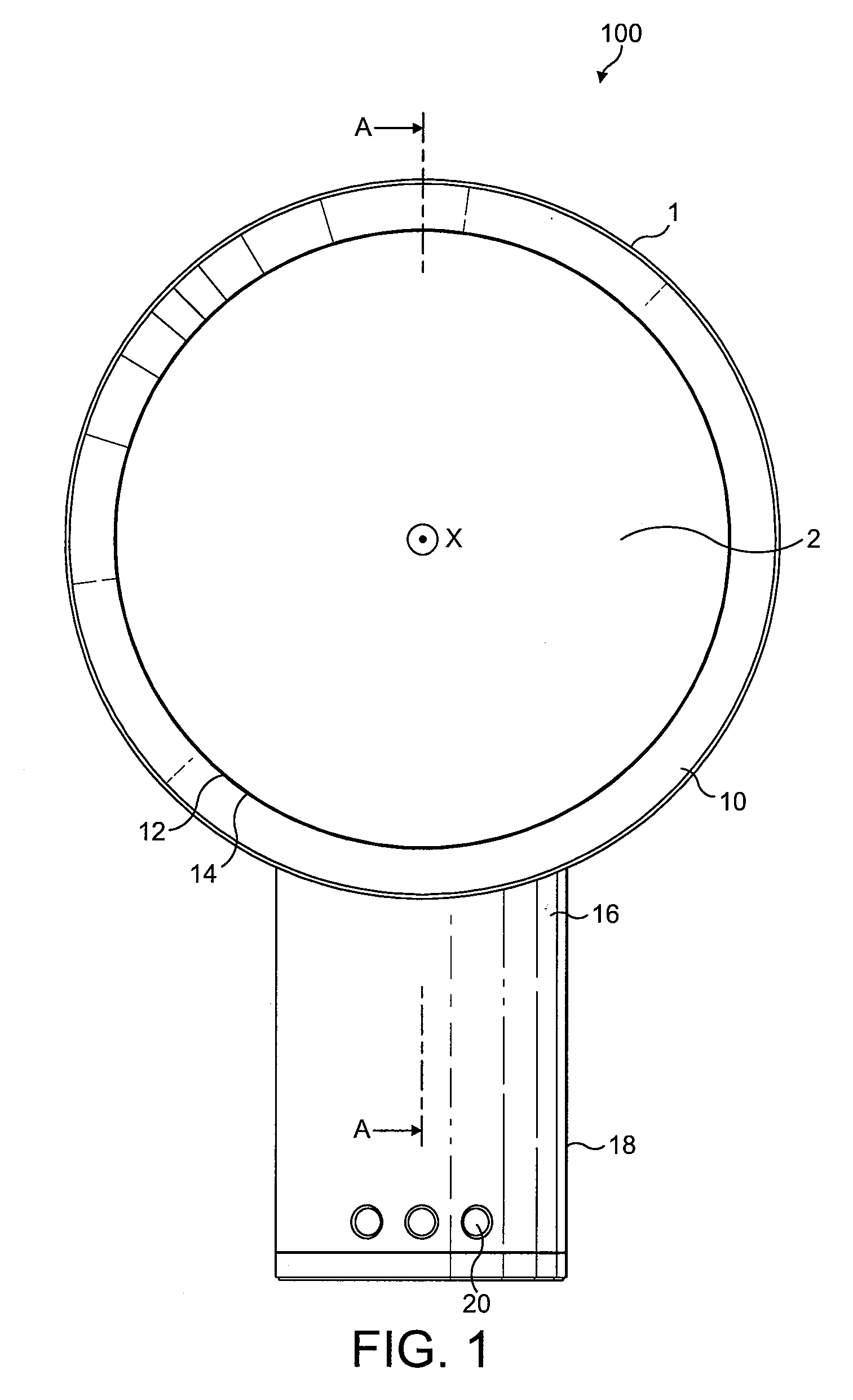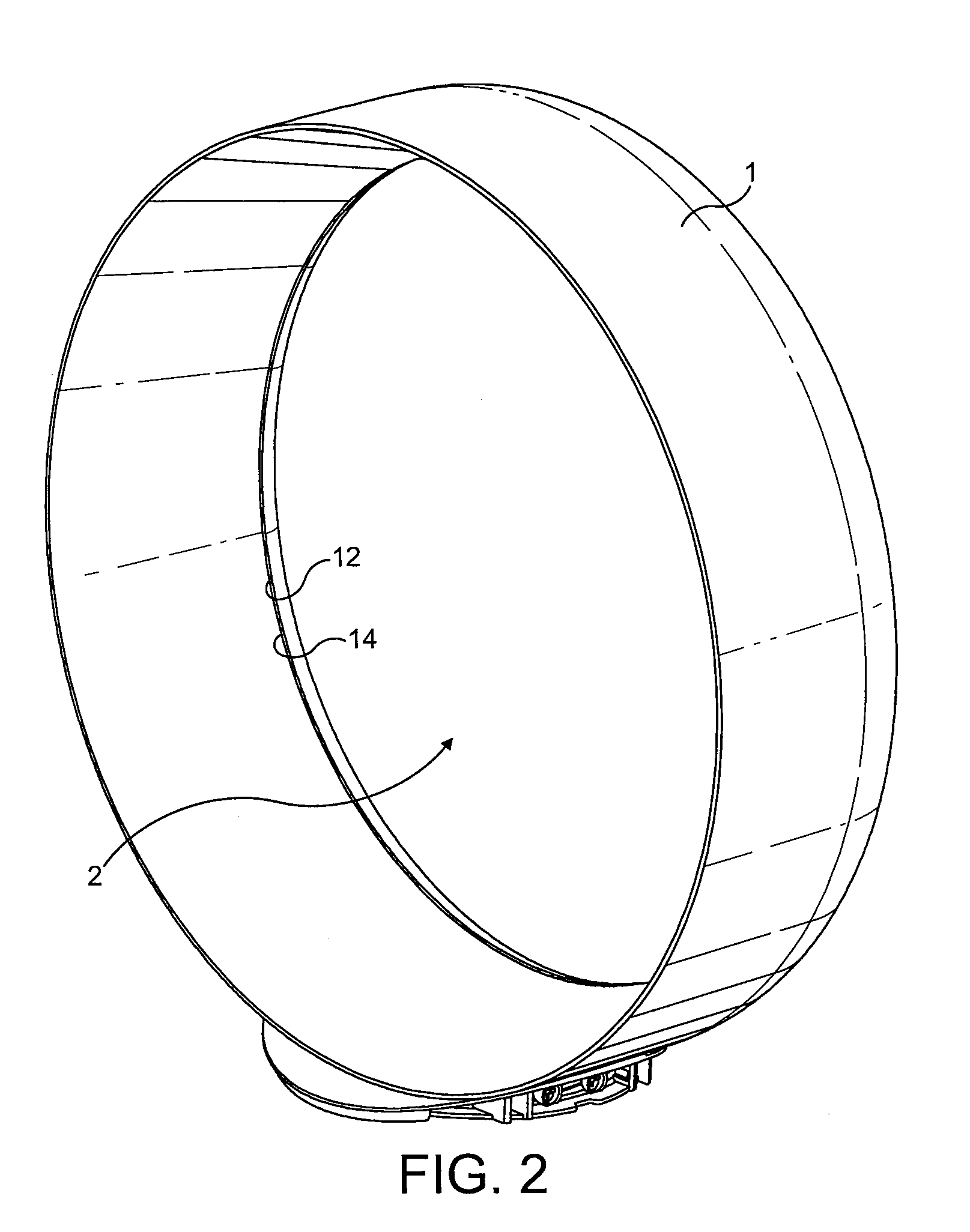Fan
- Summary
- Abstract
- Description
- Claims
- Application Information
AI Technical Summary
Benefits of technology
Problems solved by technology
Method used
Image
Examples
Embodiment Construction
[0034]FIG. 1 shows an example of a fan assembly 100 viewed from the front of the device. The fan assembly 100 comprises an annular nozzle 1 defining a central opening 2. With reference also to FIGS. 2 and 3, nozzle 1 comprises an interior passage 10, a mouth 12 and a Coanda surface 14 adjacent the mouth 12. The Coanda surface 14 is arranged so that a primary air flow exiting the mouth 12 and directed over the Coanda surface 14 is amplified by the Coanda effect. The nozzle 1 is connected to, and supported by, a base 16 having an outer casing 18. The base 16 includes a plurality of selection buttons 20 accessible through the outer casing 18 and through which the fan assembly 100 can be operated.
[0035]FIGS. 3, 4 and 5 show further specific details of the fan assembly 100. A motor 22 for creating an air flow through the nozzle 1 is located inside the base 16. The base 16 further comprises an air inlet 24 formed in the outer casing 18. A motor housing 26 is located inside the base 16. Th...
PUM
 Login to View More
Login to View More Abstract
Description
Claims
Application Information
 Login to View More
Login to View More - R&D
- Intellectual Property
- Life Sciences
- Materials
- Tech Scout
- Unparalleled Data Quality
- Higher Quality Content
- 60% Fewer Hallucinations
Browse by: Latest US Patents, China's latest patents, Technical Efficacy Thesaurus, Application Domain, Technology Topic, Popular Technical Reports.
© 2025 PatSnap. All rights reserved.Legal|Privacy policy|Modern Slavery Act Transparency Statement|Sitemap|About US| Contact US: help@patsnap.com



